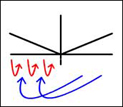“Neolithic China and Ancient Culture” (Neolithic and the Xia Dynasty of China: 5,500 BC—1,600 BC)
This video details the initial cultures that arose in the river valleys of eastern Asia starting in 5,500 BC, which eventually became modern-day China.
The video is by Chris Hasler on the Study of Antiquity and the Middle Ages channel.
Following are points this documentary explains:
Introductory Information
— Pottery was developed very early in China, along with brass metallurgy, the practice of growing rice and millet, as well as raising pigs, yak, buffalo, and jungle fowl.
— People initially settled along the Yellow and Yangtze Rivers in China.
— Early Chinese writings that are a direct ancestor to modern Chinese writing have been discovered from 5,500 BC, demonstrating how Chinese culture has survived over that time despite the fact that the power has shifted.
Hemudu Culture (5,500 BC — 3,300 BC)
— A site was discovered in 1973 that shows that the first civilized Chinese cultures actually evolved around the Yangtze River rather than the Yellow River as was previously thought. It is known as the “Hemudu Culture.”
— The Hemudu people navigated the river and coast in oar-powered boats, and they cultivated rice. They created jewelry items and tools using stone, wood, bone, and jade.
— They hunted wild deer and buffalo with arrowheads and harpoons. They gathered fruits such as kiwi, melon, and peaches.
— The Chinese have been very innovate with their development of pottery, which took thousands of additional years to emerge in the Near East and Egypt. The Hemudu pots were distinctive because of their charcoal-blacked appearance.
— Advanced architecture techniques were also developed where they built on staked ridge poles, which is still practiced today in the less-affluent regions of China.
Majiabang Culture (5,000 BC to 3,300 BC)
— The “Majiabang Culture” emerged at the north of the Yangtze river close to the Eastern coast of China at the same time as the Hemudu Culture, where they grew rice and established trade routes for the import and export of rice. Some scholars think that millet was the primary crop that they grew.
— Like the Hemudu Culture, they had an agriculture lifestyle and they also hunted, fished, and gathered food around the rive. There is little evidence of conflict, where they co-existed with the Hemudu culture with no apparent problems throughout the 5th millennium BC, and well into the 4th Millennium BC.
— They created materials using the “ribbed stitch” technique, which is a complex method when compared to standard weaving.
(Other cultures are also mentioned, including: Peiligang, Pengtoushan, Beixin, Cishan, Dadiwan, Houli, Xinglonqwa, Xinle, Zhaobaogou, Hemudu, Daxi, Majiabang, Yangshao, Hongshan, Dawenkou, Songze, Liangzhu, Majiayao, Qujialing, Longshan, Baodun, Shijiahe, and Yueshi.)
Peiligang Culture (7,000 BC to 5,000 BC)
— A site known as “Jiahu” has revealed symbols inscribed on tortoise shells, which was an early form of writing.
— The culture emerged around the Yellow River at about 7,000 BC, which is as much as 2,000 years earlier than the Yangtze river societies. The Yellow River is about 500 miles north of the Yangtze river.
— These people were agricultural, and they are also known for their pottery (which didn’t arise in other parts of the world until many millennia later.)
— The sites from this culture have possibly been abandoned due to flooding.
The Yangshao Culture (5,000 BC to 3,000 BC)
— A site known as “Banpo” contains symbols that are likely a form of early writing. It also contains pottery kilns. The Chinese were the earliest experts at creating ceramic vessels. They decorated their pots with many designs and illustrations of humans and animals, sometimes depicting human fertility. They constructed the pots by layering rolls of clay on top of one another and then smoothing the surface, which predated the use of a pottery wheel.
— Infant children were buried in pots. There is evidence of “secondary burials,” where the dead were laid to rest in a temporary grave to decompose, and then the bones are retrieved and cleaned for a re-burial. Grave goods were placed with the bodies as well.
— Historians believe that the Yangshao culture started as a matrilineal society, and then changed into a patrilineal society.
— Buildings were constructed using the “rammed earth” technique, where materials are compacted into a framework and allowed to set in place before removing the framework, which is very different than the mud-brick construction techniques of other cultures at that time.
— They created and used textiles using the rib-stiched weaving technique. They used hemp to create textiles and clothing, and to a lesser degree they may have even been using silk made from silkworm cocoons.
— A trade link existed between the Indus Valley civilizations and Chinese cultures in the third millennium BC, as evidenced by the discovery of jade in the Indus Valley. This predated the Silk Road route by many millennia. They traded silk and spices, which was highly sought after by Western traders. Therefore the Indus civilization was a key link between the Far East and the West at the time.
The Longshan Culture (3,000 BC to 1,900 BC)
— The “ Longshan culture” naturally developed from the Yangshao culture rather than forcibly “replacing” it. It is also known as the “black pottery culture,” with the technique likely coming from the Hemudu. DNA evidence shows that there was a migration of Hemudu people into the adjacent Longshan region.
— Those people also likely migrated to Taiwan, the islands of southeast Asia, Melanesia, and Micronesia over the next few thousand years, as well as the island of Madagascar off the coast of Africa and the island of New Zealand.
— This culture has the first evidence of pottery that was created with a pottery wheel. They also created “polished stone tools,” including many weapons such as arrowheads that suggest that conflict existed.
— Advanced tool production led to improved methods of agriculture, where different types of millet were being cultivated, as well as rice and wheat. Pigs and dogs were domestically produced throughout the Chinese Neolithic, and sheep, goats, and cattle were also being produced.
— There is definite evidence of silk being produced at this time, and specialized agricultural tools have been discovered.
— A site called Taosi was found in the modern Shanxi province close to the Yellow river, which has been occupied since about 2,300 BC. They employed the typical “rammed-Earth” perimeter walls with their architecture, however that only existed in some regions of the city, which suggests stratification within the society where an elite lived within the walls.
— In 2003, a large constructed platform was discovered from this time period that is linked to the position of the sun and the moon during the solstices, which suggests a link between that society and the other Eurasian societies.
— The Longshan culture was concentrated around the mouth of the Yellow River, with its influence spreading outwards. Other cultures existed to the north of it such as Laohushan, to the west of it such as Majiayao, and to the south of it such as Qujialing Shijiahe.
Prior to the Shang Dynasty (1,600 BC — 1,046 BC)
— Archeology and Chinese tradition give conflicting accounts about what happened during this time.
— In the third millennium BC, the “Yellow Emperor” named Huangdi emerged from the tribes of prehistoric China. He established a government in China, and he was succeeded by his grandson Zhuanxu.
— Flooding of the rivers was a significant issue at that time, and a distant relative of “Yellow Emperor” of was able to implement stopping that from happening, which led to him being being crowned Emperor and being known as “Yu the Great.” He is known as being “the first great emperor of the Xia dynasty.”
— Eventually the emperors of the Xia dynasty were overthrown by Cheng Tang, the first king of the Shang Dynasty, which is the first dynasty that has firm archeological evidence of its existence.
— The Shang Dynasty went into decline at around 1,900 BC. A site was discovered at Alito that provides evidence from the period between the Longshan culture and the Shang Dynasty. It shows signs of bronze technology with a bronze workshop. There is also evidence of palaces, which points to a culture of an elite class of rulers. Archeologists call it the “type site of the Alito culture.” It is upriver near the Yellow River. The most notable discovery is of burial sites that contain many grave goods including bronze and jade artifacts, as well as impressive pottery and items made from seashells, turquoise, and Cinnabar (which is a scarlet-colored mineral.) Scientists are convinced that Alito is the capitol city of the region, and it was the home of an elite class of people who were highly revered within their society. It is not known if it was a part of the Xia dynasty or not, but there is a real possibility that it was.
Closing Remarks
— The Chinese were far ahead of other cultures with pottery, the domestication of animals and crops, and writing, while metallurgy arose in China at about the same time as other cultures.
— Essentially cultures coalesced and prospered around the upper and lower Yellow and Yangtze rivers, while other societies emerged on the coastal lands and the island of Taiwan.
— At about 1,750 BC, the first major dynasty showed up that there is substantial evidence of— being the Shang Dynasty in northern and eastern China centered around the Yellow River, and it was also influential around the lands of the Yangtze River.
Article Tree
| A Summary of the History of the World, in Videos |
| ASIAN HISTORY |
| Video: “Neolithic China and Ancient Culture” (Neolithic and the Xia Dynasty of China: 5,500 BC—1,600 BC) |








